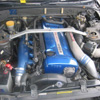Oil Analysis - Who Can Read The Results
Announcements
-
Similar Content
-
Latest Posts
-
By Looney_Head · Posted
Latest round of updates on the car. I purchased and installed a SWS clutch slipper to help with 60ft times and got some second-hand good condition 275/40R17 Hoosier DR2 radials. Test and tune in November showed the tyres were an upgrade over my over 15 year old mickey Thompson's and I got a 1.8 second 60ft and pb et of 11.71 but even then, that run wasn't great due to rain and driver error (the event got called off 10 minutes later fast forward to the weekend just gone 25th of Jan and there was finally a break in the weather to let racing happen. The first run the track was slippery and only managed a 12.1@129 Second run the track was better and got a new pb et and mph: 11.54@131 Lith and I then worked out that I installed the previously mentioned clutch slipper incorrectly and its never been working, and I had just been dumping the clutch the entire time, we also noticed it was on street boost and not race boost. So I lined up for a third run with the car turned up in the first two gears, but the passengers side axle objected to clutch dumps and left the chat which stopped my weekend. so there will be another attempt in the future once I replace the tyres as they rubbed and are stuffed now. but a low 11 should be on the cards. -
Ceramic coating and heat shielding, you mean?
-
By joshuaho96 · Posted
Turbos don't require pulling the motor apart so that's "easier". I would recommend the Nismo R3 turbos instead if you want to do stock twin turbo. It doesn't make as much power as the 2530s but it's only like ~50 whp off the mark and should have better response (ball bearing CHRA, slightly smaller turbo). A local that went with a Garrett G30 and 6boost manifold recently nearly burned his car to the ground after the hood insulator started melting and and burning so if you go single turbo I recommend doing a lot of research and validation work to make sure you don't do the same. -
New rear lights, filler panel sprayed, cleaned and back together before, during, after shots 😍
-
100% is gyprock, I agree. Slip of the keyboard. Haha! I left my indicator bulbs out to save a bit of weight.
-






Recommended Posts
Create an account or sign in to comment
You need to be a member in order to leave a comment
Create an account
Sign up for a new account in our community. It's easy!
Register a new accountSign in
Already have an account? Sign in here.
Sign In Now